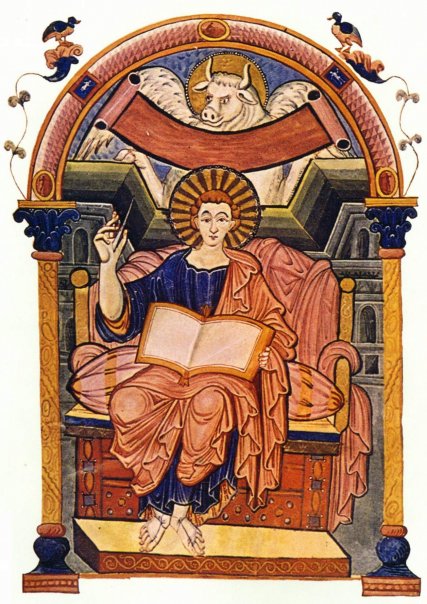Paper which was invented in China around 105 AD, was at first prepared from bark and hemp. These were not quite suitable for drawing and decoration. Although, paper produced by the Chinese technology was of a high standard. This technology was transferred to Japan around 610 AD, and then to the Arab world via Samarkand in Central Asia. In America, the Aztec and Mayan civilizations also produced a more primitive bark paper from an unknown date.
In Europe paper was introduced by Arab traders of Spain. Italy was the first European country that produced paper around 1276 AD, and more than two and half centuries later England began to produce it in 1495. The primary reason for this slow pace was the low quality of these papers which were unsuited for graphic design of European religious manuscripts.1 Among these early European manuscripts are the Bibles that have been created in the monasteries of Ireland, Scotland, and England. Many of graphic decorations in these books have been influenced by the Arabesque style of Muslim manuscripts that employed mainly geometrical and abstract designs for decorating their holy books and their mosques.
In the early 9th century Archbishop Ebo of Rheims, at Hautvillers (near Rheims), assembled artists and transformed Carolingian art to something which evoked a revival of Roman classicism. However, it still kept its characteristics of basically linear presentation, with no concern for volume and spatial relationships. The style was reminiscent of the Merovingian and Hiberno-Saxon traditions known as the art of the Migration Period . The Gospels were painted with energetic, bright and vivid brush strokes, evoking an inspiration and energy unknown in classical Mediterranean forms. (5)
Such designs are scattered throughout the text with decorated initials and small figures of animals and humans often twisted and tied into complicated knots and many of them serve to fill spaces left at the end of lines. Many significant texts, such as the Pater Noster have decorated initials. No earlier surviving manuscript has this massive amount of decoration.
The first letter of the text is enlarged and decorated, with the following letters surrounded by dots.
The monks who endowed the Book of Durrow with their calligraphic art and decorative designwork can be regarded as being among the earliest Irish artists of the medieval period. The Gospel manuscript itself exemplifies the style known as Hiberno-Saxon or Ultimate La Tene, which was widely practised across the British Isles and Ireland. (7)
Go to the next Chapter: Chapter 4 - The Islamic Calligraphy
Footnotes:
1. See: A Companion to the History of the Book,edited by Simon Eliot and Jonathan Rose, 2007, Blackwell Publishing, eISBN: 9781405127653
2. See: Larousse
3. See: Lindisfarne Gospels British Library.
4. See: The Lindisfarne Gospels: society, spirituality and the scribe
By Michelle P. Brown, University of Toronto Press, 2003, ISBN o-8020- 8597-o
5. see: A History of Art Vol 2 by G. Carotti, Beryl De Zoete, Publisher, E.P. Dutton, New York , 1909
6. Henry, Françoise (1974). The Book of Kells: Reproductions from the Manuscript in Trinity College, Dublin. New York: Alfred A Knopf. ISBN 039449475X.
7. The Book of Durrow: A Medieval Masterpiece at Trinity College Dublin, Roberts Rinehart Publishers 1996, ISBN-13: 978-1570980534
------------------------------------------------------------------------------------

This work is licensed under a Creative Commons Attribution-No Derivative Works 3.0 Unported License.
This work is licensed under a Creative Commons Attribution-No Derivative Works 3.0 Unported License.










No comments:
Post a Comment